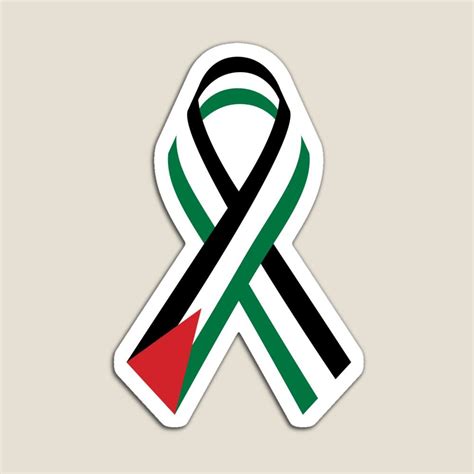The Palestinian colors ribbon pin has become a ubiquitous symbol of solidarity and advocacy for the Palestinian people. This modest yet powerful symbol has gained widespread recognition and has been used by individuals, organizations, and governments worldwide to express their support for the Palestinian cause.

Historical Significance
The colors of the Palestinian flag—black, white, green, and red—hold profound historical significance. Black represents the oppression and suffering endured by the Palestinian people, white symbolizes purity and hope, green embodies the natural beauty and agricultural heritage of Palestine, and red stands for the sacrifices made by Palestinian martyrs in the struggle for liberation.
Widespread Use
The Palestinian colors ribbon pin has been widely adopted by individuals from all walks of life. Activists, politicians, celebrities, and ordinary citizens alike wear the pin to demonstrate their solidarity with the Palestinian people. It has become a common sight at rallies, protests, and other events where support for the Palestinian cause is expressed.
Global Recognition
The Palestinian colors ribbon pin has achieved global recognition. It is recognized as a symbol of the Palestinian struggle by governments, international organizations, and media outlets around the world. The United Nations, for example, has granted the Palestinian Authority observer status and has consistently called for a just and lasting solution to the Israeli-Palestinian conflict.
Political Impact
The Palestinian colors ribbon pin has had a significant political impact. It has helped to raise awareness about the Palestinian cause and has put pressure on governments to take action to end the Israeli occupation of Palestinian territories. The pin has also served as a tool for dialogue and reconciliation, bringing together people of different backgrounds and perspectives in support of a peaceful resolution.
Social Advocacy
Beyond the political arena, the Palestinian colors ribbon pin has also been used for social advocacy. Activists have used the pin to promote human rights, oppose discrimination, and call for justice for the Palestinian people. The pin has become a symbol of the struggle for a more just and equitable world.
Cultural Symbolism
The Palestinian colors ribbon pin has also taken on cultural significance. It has been incorporated into art, music, and literature as a symbol of Palestinian identity and resilience. Artists have created paintings, sculptures, and other works of art featuring the pin, while musicians have written songs and performed with the pin as a form of protest and solidarity.
Effective Strategies for Using the Palestinian Colors Ribbon Pin
- Wear the pin visibly: Display the pin prominently on clothing, bags, or other accessories to demonstrate your support.
- Educate others: Use the pin as an opportunity to engage in conversations about the Palestinian cause and raise awareness.
- Attend events: Wear the pin while attending rallies, protests, and other events where solidarity is expressed.
- Support organizations: Purchase the pin from organizations that support the Palestinian people or donate directly to Palestinian charities.
- Engage with decision-makers: Write letters or meet with your elected officials to advocate for policies that support the Palestinian cause.
Customer Testimonials
“Wearing the Palestinian colors ribbon pin is a small but powerful way to show my support for the Palestinian people. It’s a reminder that we cannot remain silent in the face of injustice.” – Sarah, activist
“The pin has been instrumental in raising awareness about the Palestinian cause. It serves as a constant reminder of the struggles faced by the Palestinian people.” – David, politician
“I’m proud to wear the Palestinian colors ribbon pin as a symbol of my solidarity with the Palestinian people. It demonstrates my commitment to a just and lasting peace.” – Amira, student
Pros and Cons of Using the Palestinian Colors Ribbon Pin
Pros:
- Raises awareness about the Palestinian cause
- Demonstrates solidarity with the Palestinian people
- Puts pressure on governments to take action
- Serves as a tool for dialogue and reconciliation
- Expresses Palestinian identity and resilience
Cons:
- May be seen as a political statement that some find divisive
- Could potentially lead to harassment or discrimination
- May not be effective in all situations
Conclusion
The Palestinian colors ribbon pin is a multifaceted symbol that carries both historical and contemporary significance. It has become a powerful tool for advocacy, solidarity, and cultural expression. By wearing the pin, individuals can demonstrate their support for the Palestinian people and their struggle for justice, equality, and self-determination.
